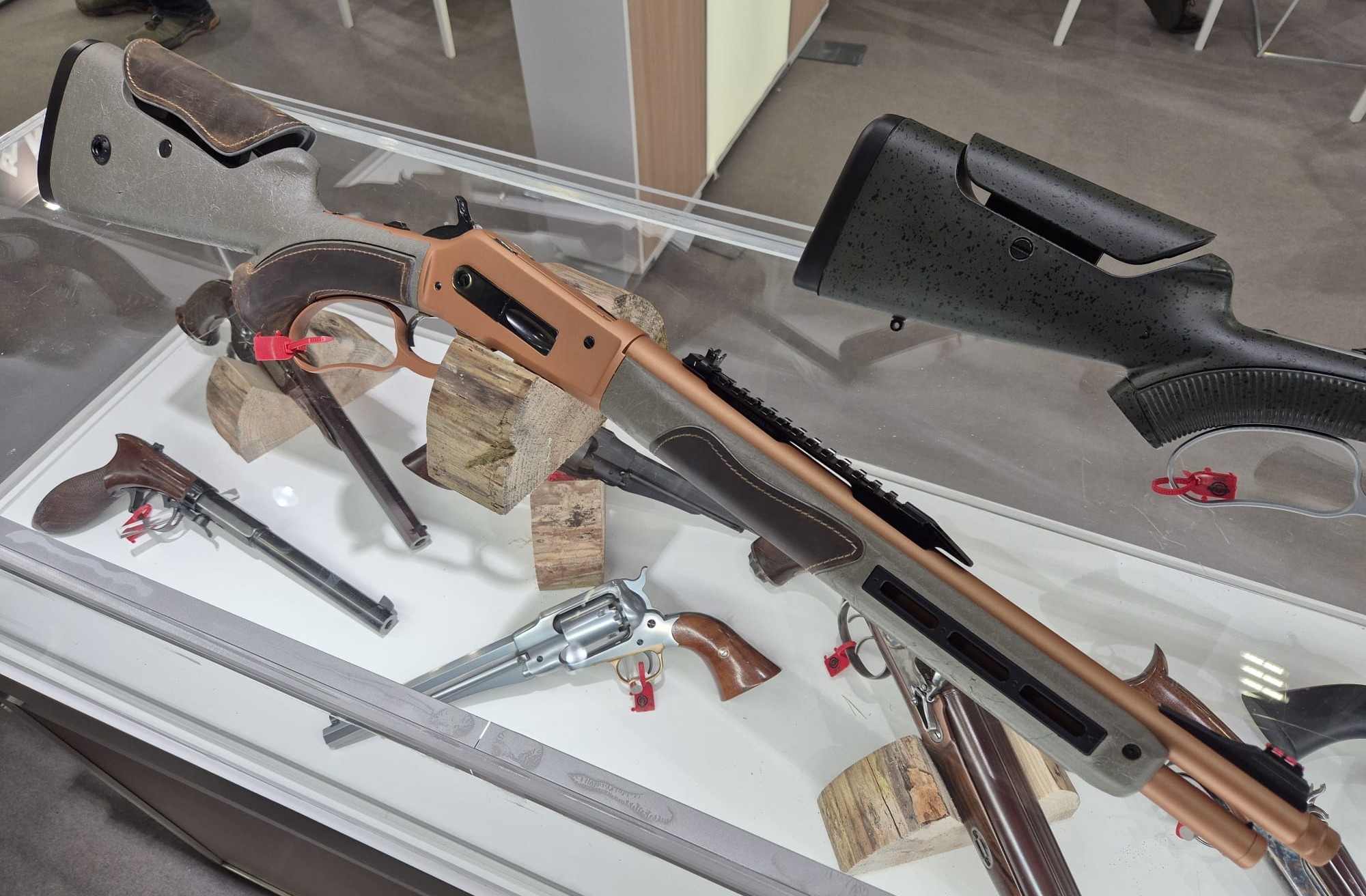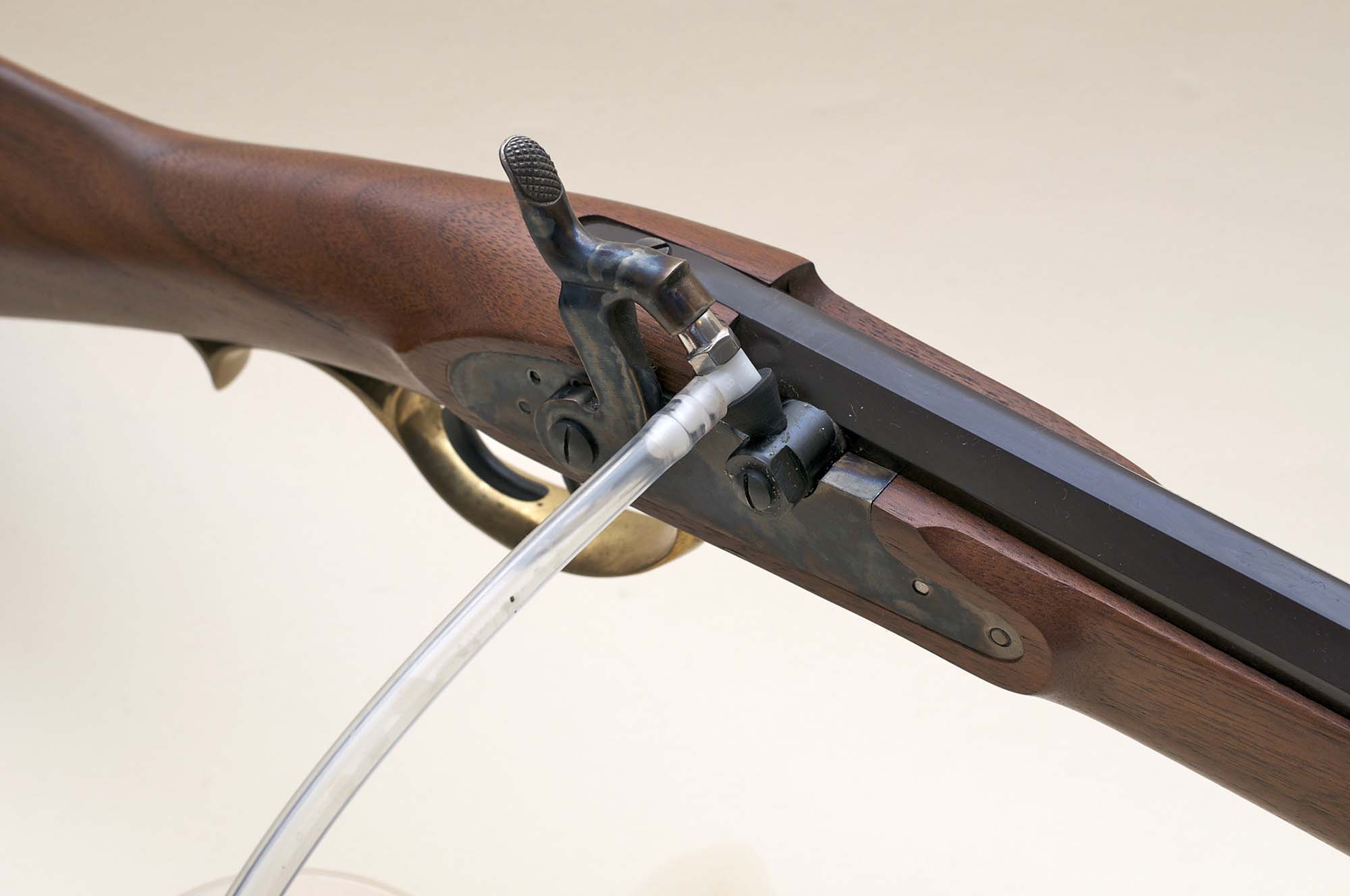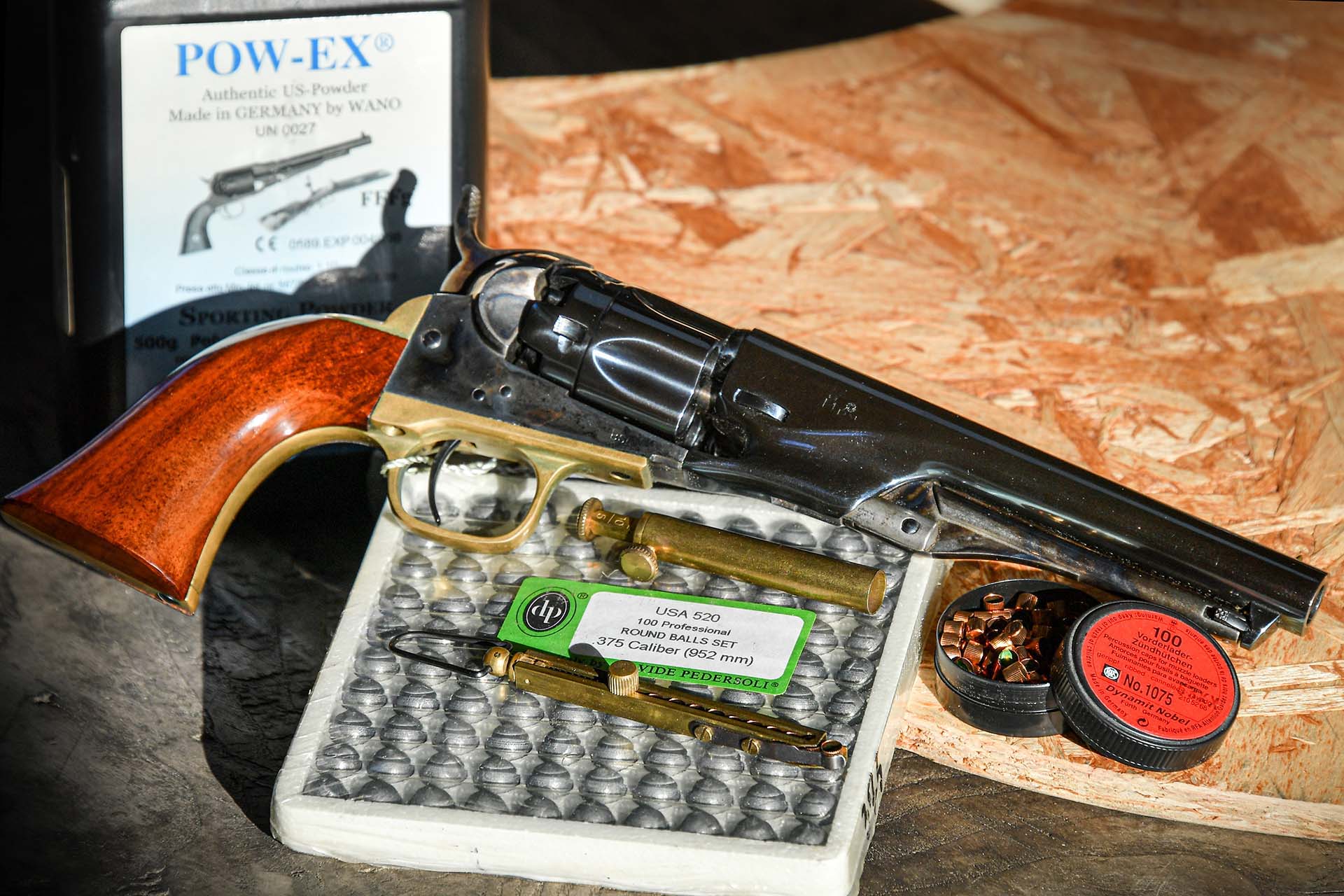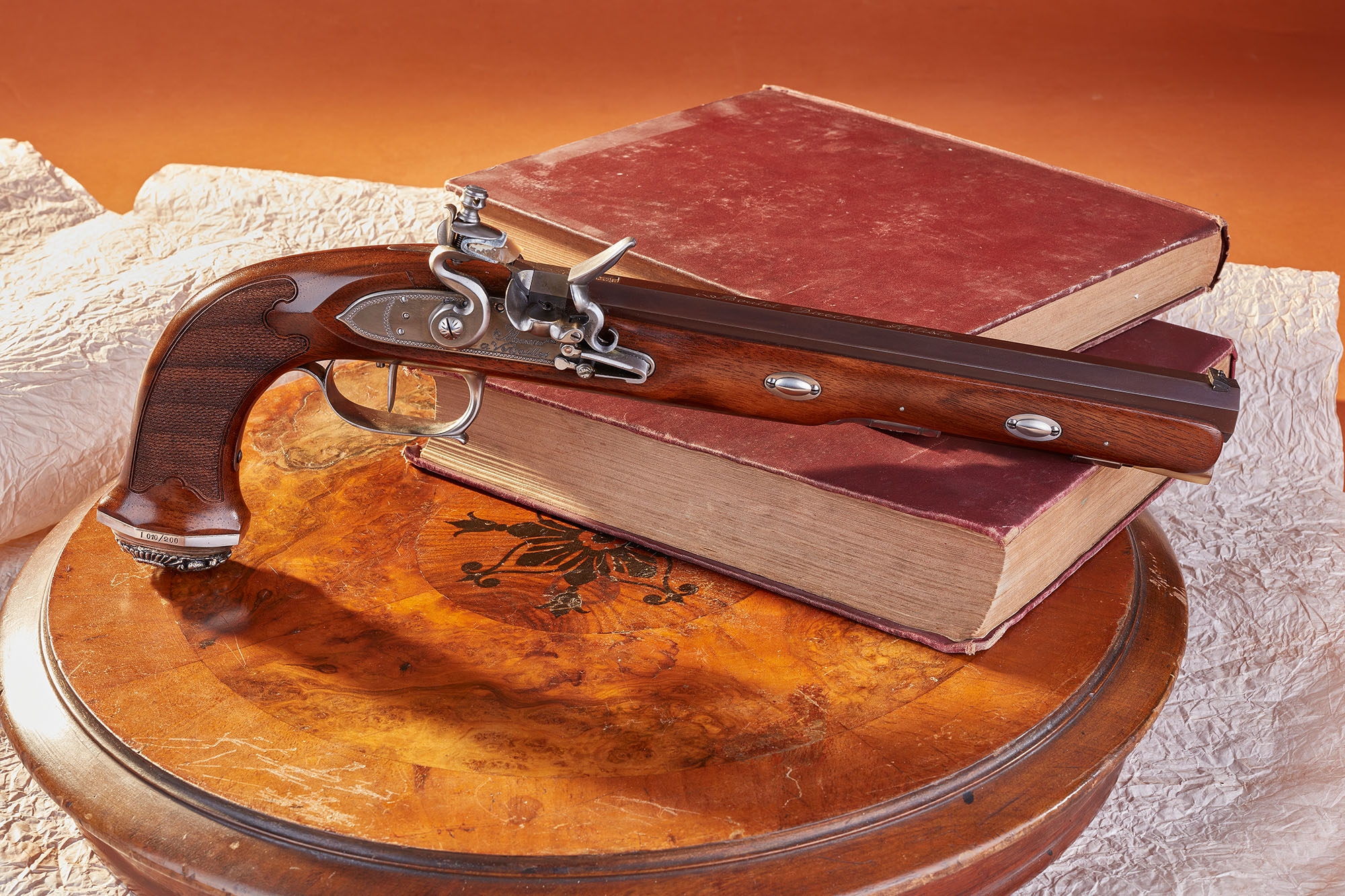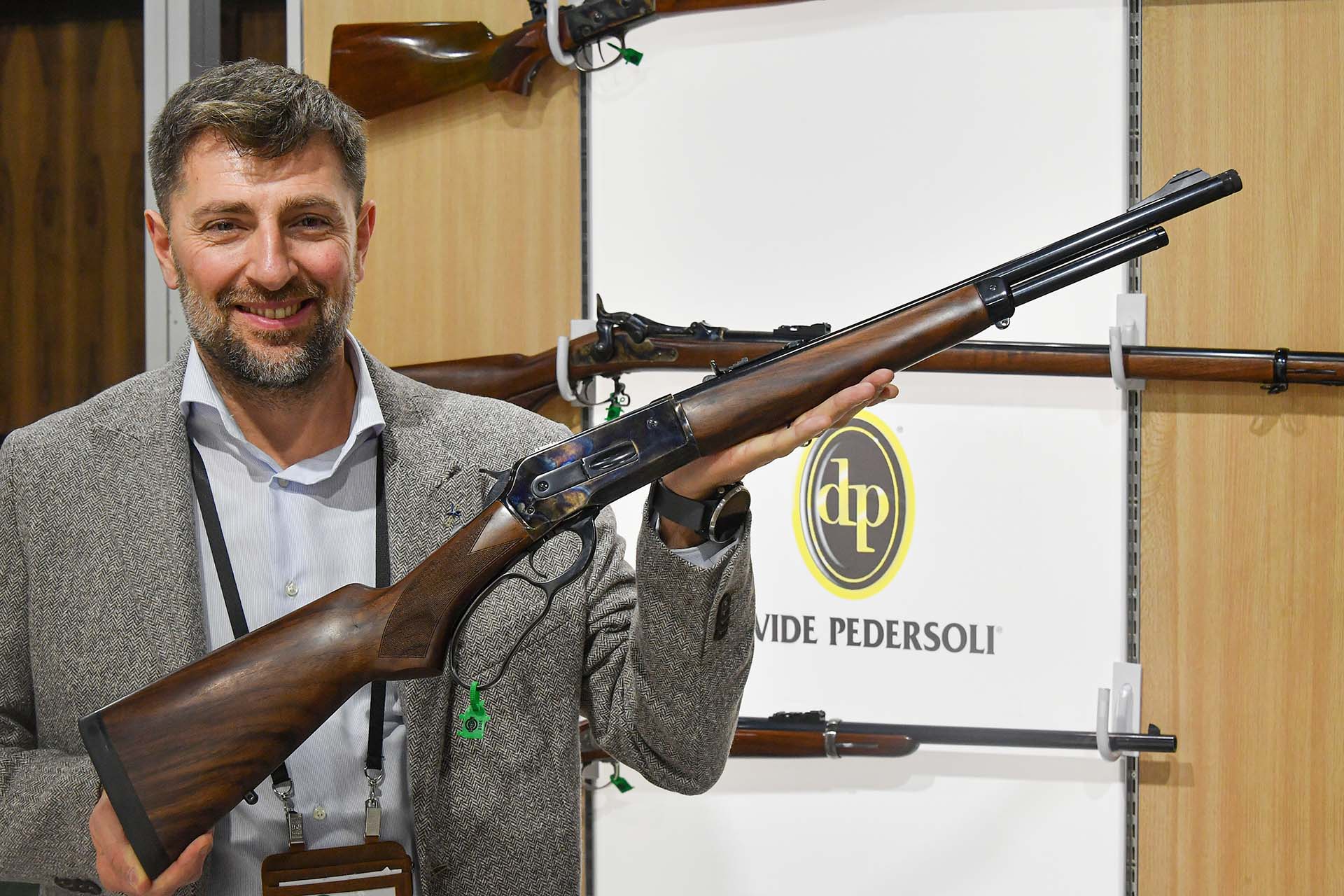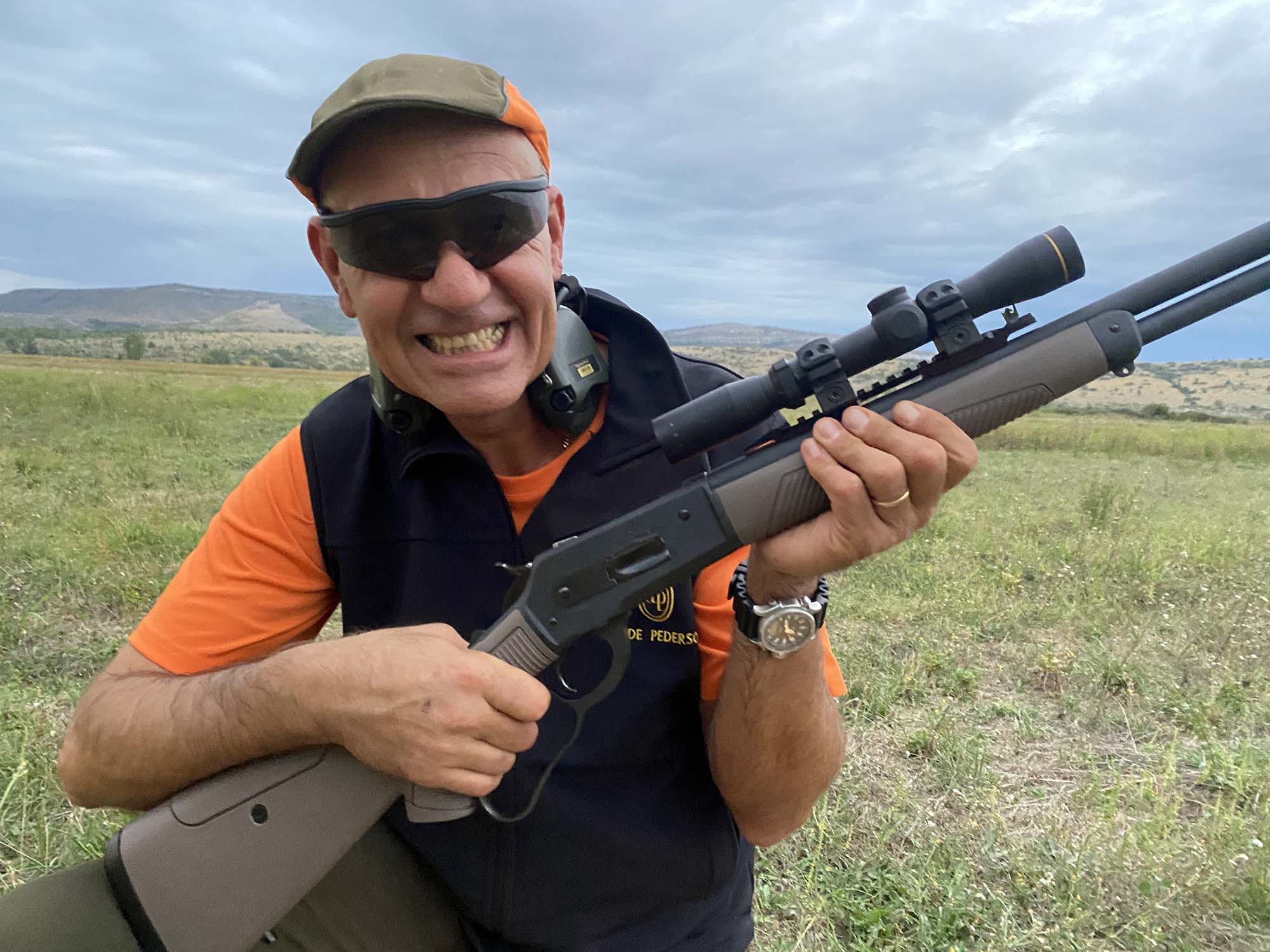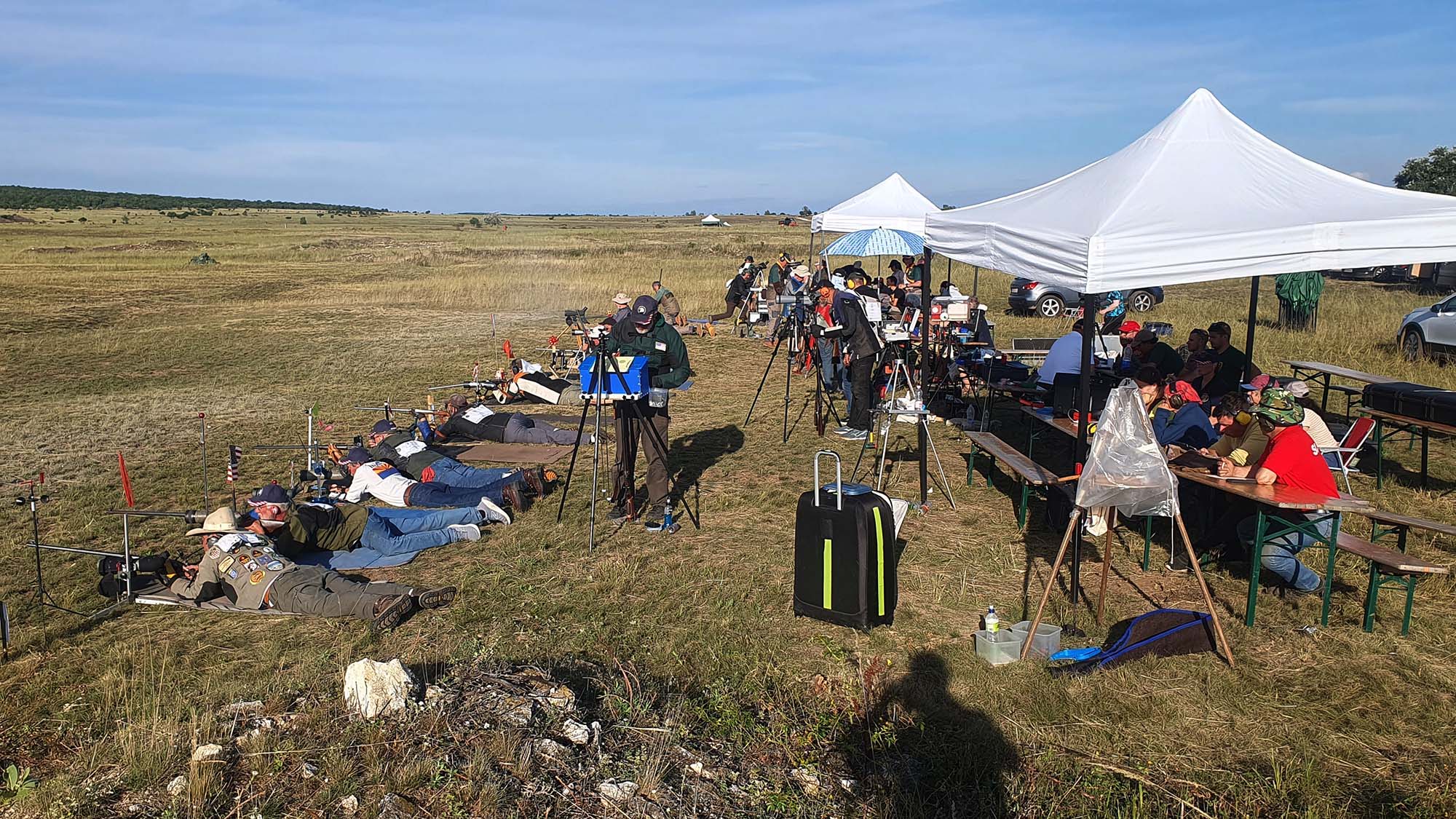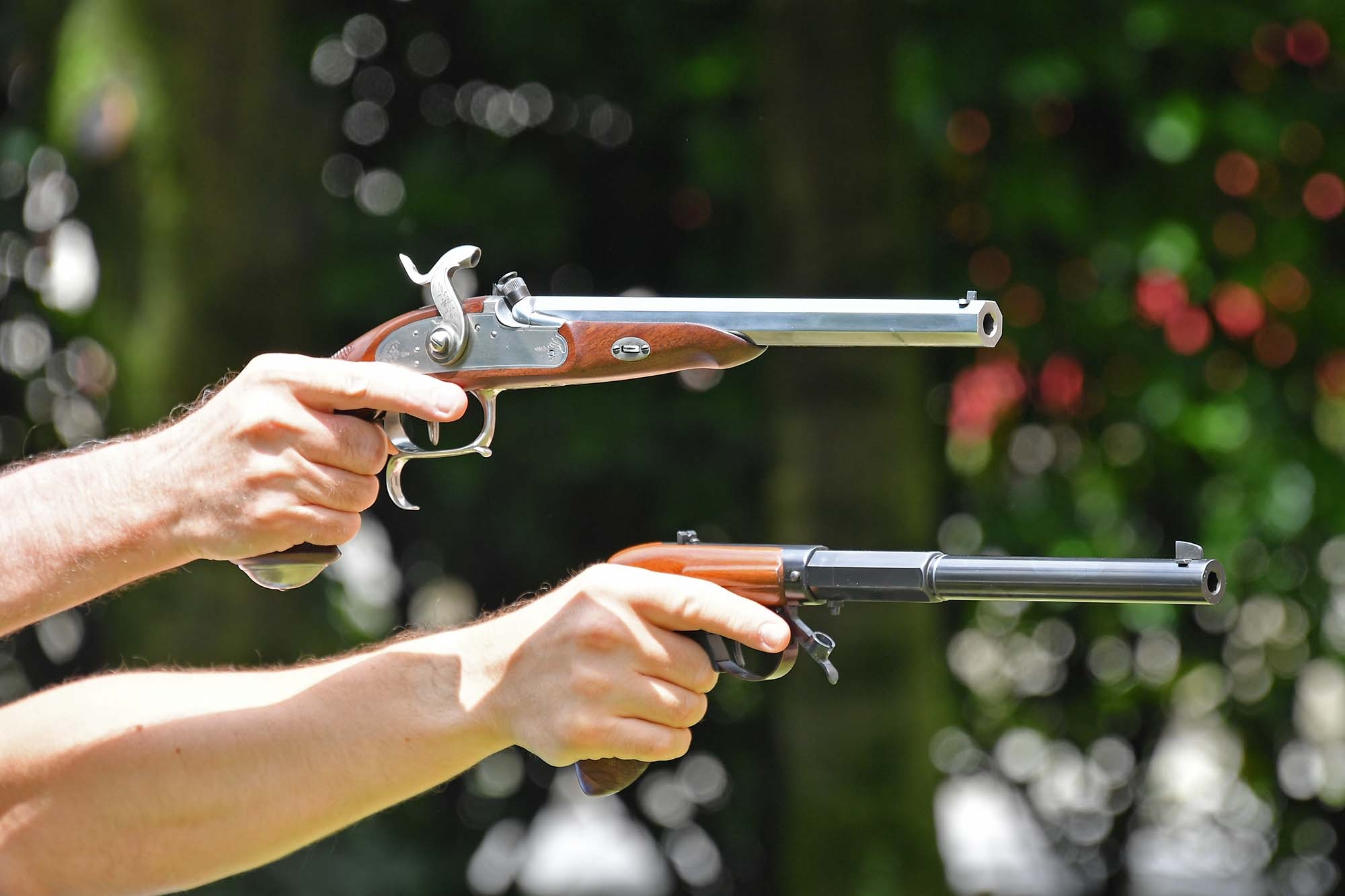The Sharps rifle has always been a versatile firearm design, easily adapted to different calibers.
This is possible through its very simple single shot structure, based on the falling block design mutuated from artillery: once the cartridge is manually inserted into the chamber, the lever that dubs as trigger guard is lifted, rising a steel prism behind the chamber, sealing it.
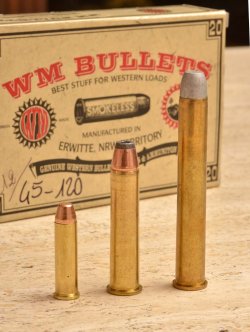
After firing (the hammer has to be cocked manually as a separate action), lowering the same lever slides down the prism and actuates the extractor, that pulls back the cartridge a few millimeters (in case of low pressure cartridges the case actually falls out of the chamber just by slightly rising the muzzle).
This allowed this rifle to be chambered in a wide variety of cartridges, from early .52 caliber paper ones to brass cased ammunition like the .40-90, .40-100 “Express”, .44-77, .50-70 Government, .50-90 Sharps, .45-70 Government, .45-110 and .45-120, to mention only a few of the vintage chamberings.
In more recent time the Sharps versatility has allowed chamberings in an even wider variety of calibers, as small as the 22 lr.
The rifle itself has been sold in a wide range of versions, differing in barrel lengths, diameter, stock shapes and other details.
We recently had the chance to test three Sharps that gave us a good feel of the wide capabilities of this gun in its various declinations: the first is the small “Little Betsy”, a slightly scaled down version chambered for the .357 Magnum cartridge; the second is the Overbaugh, in .45-70, with the lightened receiver devised by Sharps sales director and official shooter Charles Overbaugh to satisfy the requests of american target shooters complaining about the heavy receiver of the 1874 model that forced them to use shorter barrelled guns to comply with NRA regulations that put a 10 pound weight limit to target rifles: the new model, marketed in 1877 allowed a 30” barrel to be mounted, more suitable for target shooting; finally, leaving the best for last, we tried the “Q down under” model, made famous by the eponymous movie “Quigley down-under” (a great western movie that has acquired cult status among the long range shooting community and has made the Sharps rifle famous even among the uninitiated), with an impressive 34” heavy octagonal barrel, chambered for the mostrous .45-120 (the cartridge used in the movie was actually the less powerful .45-110, but the two are about the same).
Little Betsy, lightweight and handy
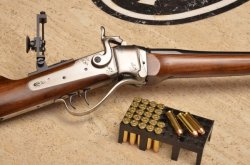
The Little Betsy handles like a charm, light, but heavy enough that you know you have a real gun in your hands, it shoots like an airgun as it comes to recoil: though powerful enough in the 24” long barrel to take on small game, the .357 Magnum generates almost no felt recoil in this rifle.
The ready availability of a very wide range of ammunition, ease of handloading and affordable price of a box of cartridges makes it an ideal gun for young people or anybody approaching shooting who wants a rifle that is both a lot of fun to shoot and very accurate, as the manufacturer puts the same high degree of craftsmanship in the barrels of the Little Betsy as in those of the Quigley, so that the peep sight mounted on the pictured specimen is by no means an exaggeration. Thanks to its light weight the Little Betsy is a joy to shoot offhand on steel plates or paper targets, while from a rest it can yeld very tight groups, particularly when using the set trigger.
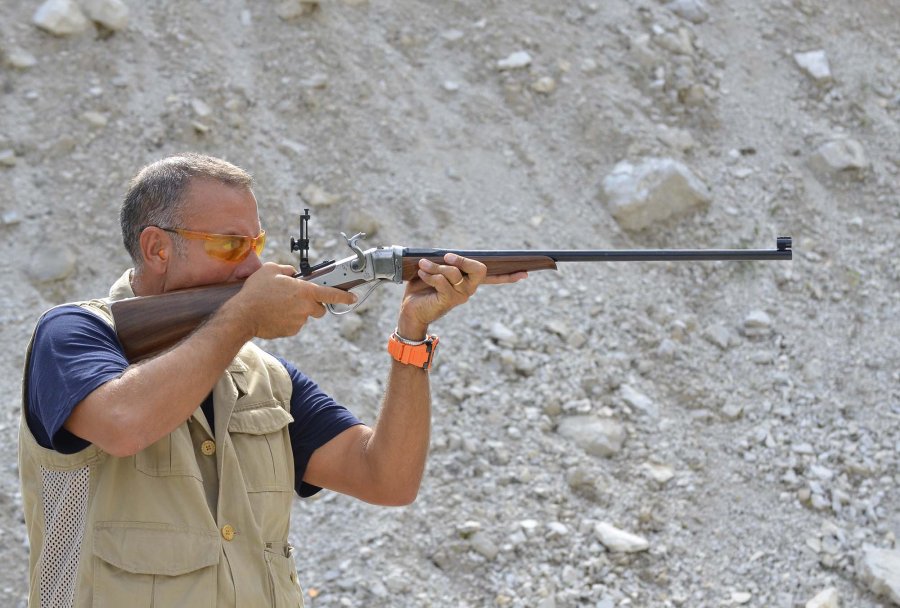
When opening the rifle after shooting, tight chambering and the high pressures of the .357 Magnum make so that the case is only partially extracted, and has to be pulled out by hand. With a very dirty rifle, using the rim of the fresh cartridge to help fully extract the spent case is a trick worth knowing.
So, if you want to shoot a lot on a budget without compromising on accuracy within distances compatible with the cartridge, or you want an accurate rifle which goes easy in the recoil compartment, the Little Betsy is the way to go.
Overbaugh: classic accuracy
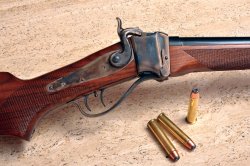
Going up in scale we meet the Overbaugh. Its 30” barrel allows for a long line of sight, for better accuracy. The .45-70 chambering is a classical.
While the simple iron sights could seem inadequate on a rifle born specifically for target shooting, the excellent ratio between front sight thickness and rear sight notch width produce a perfect sight picture. The peep sight and matching ghost ring front sight are anyway available as an optional.
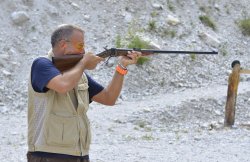
The rifle can be easily shot offhand, thanks to its light weight, and indeed in the standing position the .45-70 demonstrates all its virtues: a cartridge of a bygone era, with high power and a felt recoil that, if not light, can be tolerated in full comfort for long shooting sessions, even with the gun’s metal buttstock, particularly when shooting black podwder loads.
From a seated position, though, the light weight of the rifle takes its toll on the shooter’s shoulder, the Overbaugh being the hardest kicking of the trio. It is a versatile, very accurate rifle chambered for a cartridge of many virtues. While by no means as cheap to shoot as the .357 Magnum, the .45-70 is readily available in many loadings and is easily reloaded both with black and smokeless powder.
Quigley: not for the newbie
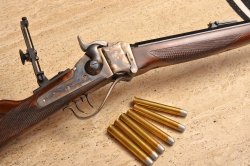
Finally we get to the Q Down Under: with its 34” barrel and over 13 pounds of weight, compared to the 7.6 of the Little Betsy and 8.3 of the Overbaugh, shooting the Quigley offhand is feasible, but not for long, at least if one wants to maintain any pretence of real accuracy. It’s plain and clear that the Quigley is meant to be shot from a rest of some kind, and we tested it this way.
The test was, alas, quite short, as there was a very limited amount of cartridges available (just 6). These were also factory loaded with smokeless powder to CIP specifications, so they were not on par with the cartridge full ballistic potential. A single, black powder cartridge loaded with the trademark paper wrapped bullet was available as an example, but not for shooting.
This kind of cartridge is not available as a factory load, but can only be obtained through a painstaking reloading process that requires an experienced reloader who has done his homework, as there is no clear cut “standard” method for making paper wrapped bullets: paper type, wrapping method, grease used vary from shooter to shooter, and while many recipes can be found on books or the web, finding the one that best suits your rifle requires time, dedication and knowledge of safe research methods.
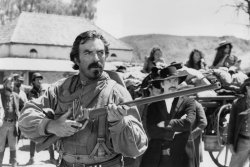
Though all I could determine by shooting the two cartridges I was allowed is that this rifle has a surprisingly mild recoil, milder than the .45-70 Overbaugh, (perhaps due to the rifle’s heavy weight), there’s a lesson to be learned here: while surely fascinating, because it’s one of the most powerful vintage ammunitions available, even more than the one Tom Selleck’s character Quigley uses in the movie, this is not an easy cartridge to shoot, as it is both hard to find in factory loadings and hard to reload, if you intend to fully profit of its ballistic potential: after all, in the movie Quigley himself has to go to considerable lengths, literally, to find a specialized artisan who can craft new cartridges when he exhausts his own reserve, and “handcrafting” is a much more appropriate term than “handloading”, when it comes to the .45-120, each cartridge an exercise in patience, skill and precision. Just to make things crystal clear: you’ll pass far, far more time crafting this rifle cartridges than shooting the rifle itself.
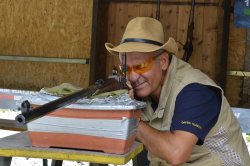
Luckily for us the Q Down Under is available in .45-70 as well, and considering we don’t have to shoot down charging cavalry a mile away, but just punch holes in targets, the .45-70 can do all the .45-120 can do, and then some... for example, it costs a fraction and can be easily obtained, which is no trifling matter: the .45-70 costing on average between 30$ and 40$ per 20 shot box (more exotic loads can be more pricey), while the .45-120 costs around 2.50$ per single empty case.
All in all, as a target shooter, if I had to choose between these rifles, I’d choose the Q Down Under, chambered in .45-70, but it’s hard to resist the attraction of the Overbaught if you have cowboy action shooting in your sights or want a long range rifle at a more affordable price, or the fun the Little Betsy promises in long range plinking.
Read also Pedersoli Sharps Small Game and Little Betsy: two vintage lightweights
For more information visit the Davide Pedersoli & C. website



